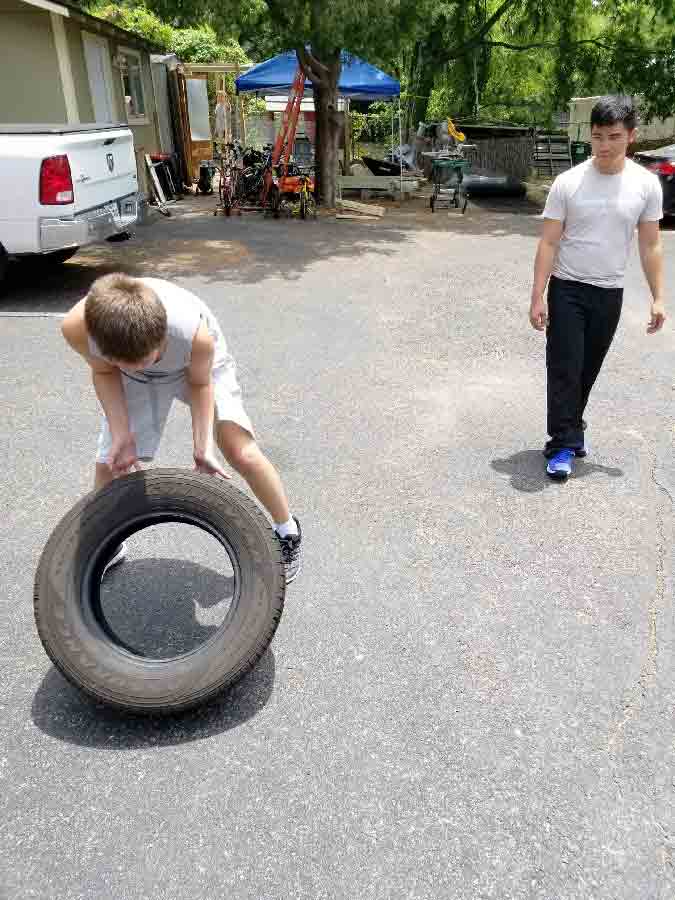Bright Mosaic provides occupational and speech-language therapies in our clinics. So, parents, say goodbye to driving to separate locations for the therapies your child may need!
Notice: Occupational Therapy Requirements
In order to qualify for Occupational Therapy services, a client must also be enrolled in Bright Mosaic’s ABA Program.

What is Occupational Therapy?
Occupational therapy, also referred to as OT, is the only profession that helps people across the lifespan to perform meaningful activities (occupations) and to be as independent as possible.
According to the American Occupational Therapy Association, “Occupational therapy can help children with autism perform better in school and home environments. Parents who are referred to occupational therapy practitioners often have concerns about the behavioral and social development problems their children with autism display in these environments, and practitioners can assist with these issues.”
Terms to know
- Fine motor – coordination of small muscles with the eyes
- Gross motor – coordination of arms and legs
- Proprioceptive – position of the body in space
- Vestibular – balance skills.

Why would my child with autism need Occupational Therapy?
Children on the autism spectrum often need support with:
- Developmental milestones like rolling over and learning shapes or colors.
- Functional life skills like cooking, cleaning, personal hygiene and taking public transportation.
- Social skills such as initiating conversations and building relationships.
- Emotional intelligence skills including recognizing emotion and social cues, and understanding the need for personal space.
- Fine motor skills like holding a pencil, drawing shapes, and tying shoelaces.
- Gross motor skills like crawling, climbing, and running.
Sensory processing and OT go hand-in-hand
In addition to social communication struggles and repetitive behaviors, most people on the spectrum also experience significant hardships with sensory processing. According to peer-reviewed research article, it’s estimated that over 90% of children with Autism Spectrum Disorders (ASD) demonstrate atypical sensory behaviors.
Occupational therapy is beneficial to those on the spectrum as it gives them strategies to self-soothe and better regulate their senses. This ability to self-regulate can improve concentration, stabilize moods, and increase the likelihood of social interaction. Moreover, it can decrease the severity of food aversions and oral sensitivity, allowing them to try and explore new foods outside of their comfort zone.
Normally, OTs will ask the parents to complete a sensory questionnaire to pinpoint the areas of greatest need. Based on the results, methods are introduced to address these needs.
What are some methods to address sensory processing issues?
- Brushing protocol – using a soft bristled brush to desensitize the skin of those with tactile issues.
- Joint compression is also often part of this protocol which can help calm the child as well as encourage them to acclimate to greater tactile sensation.
- Deep pressure – using weight can provide greater sensory input to those who are under-sensitive.
- Swings and hammocks to calm an overactive vestibular system.
- Jumping on a trampoline to activate the proprioceptive system.

Heavy work is another common OT strategy that includes any activity that pushes or pulls against the body. The most effective heavy work activates many muscles and joints at the same time for a short duration. Something as simple as flipping a car tire can accomplish this goal and, for some children, this can be a fun ‘break’ from other work.
Without this type of physical release, children may seek input by crashing into or jumping off things or other unsafe actions.
When sensory-sensitivity decreases, concentration improves
Isn’t it hard to concentrate when someone’s blaring loud music? How about doing algebra while wearing an itchy wool sweater? Children with sensory processing issues are often bothered by sounds, sights, smells, and textures that most people simply ignore.
OT is effective at identifying and proactively addressing the cause of their sensory over-stimulation. Tools such as weighted blankets and compression vests can provide deep pressure to the muscles and joints. This can encourage the release serotonin, a natural relaxant, making it possible to concentrate on the other things life has to offer.
